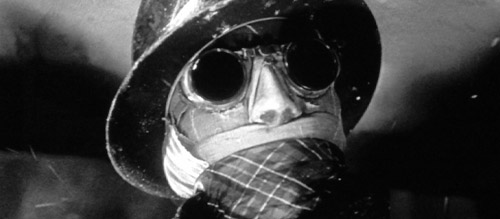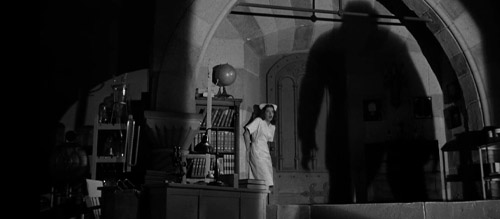Where to Start with Universal Classic Monsters
Following the success of lavish and macabre literary adaptations fronted by Lon Chaney in elaborate makeup in The Hunchback of Notre Dame (1923) and The Phantom of the Opera (1925), Universal Pictures began a lucrative cycle of horror film production in earnest with the advent of the Talkie at the end of the 1920s.
1931 brought forth Dracula starring Bela Lugosi and Frankenstein starring Boris Karloff in quick succession and with great box office success, and for the next two decades Universal brought to life some of the most memorable movie monsters in cinema history. This series came to be known as the Universal Classic Monsters.
The series became famous for its iconic monster heroes and villains and for its groundbreaking creature makeup from Jack Pierce (often on the faces of Boris Karloff or Lon Chaney Jr), and the revolutionary visual and optical effects from John P Fulton (particularly his Oscar-winning work on the Invisible Man series).
As soon as it was deemed profitable, the world’s favourite catalogue of monsters began meeting up in each other’s movies – seventy years before Marvel managed it, the world’s first cinematic universe was born with Frankenstein Meets the Wolf Man in 1943 and House of Frankenstein in 1944.
The thing about the world’s first cinematic universe is that there are a lot of them, 27 to be precise, plus three spoof films starring Abbott and Costello and some of the original Universal Classic Monsters stars, but they don’t really count.
Not all of them are good, not all of them are worth your time, though as they range between 60 and 80 minutes a piece you’ll never be wasting too much time checking them out. So where do you start?
You’d do perfectly well just picking a monster and working your way through their films – there are seven Frankenstein films and five from The Mummy and The Invisible Man, for instance. But what follows are three films that serve as a primer for Universal’s monster movies and offer an overview of the different tricks, tropes and tones found in this dark universe. If you enjoy them, you’ll have many more to sate your appetite for the monstrous.
1. The Wolf Man (1941)
Laurence “Larry” Talbot (Lon Chaney Jr) returns to his ancestral home in Wales following the sudden death of his brother. His plan to run his aristocratic father’s lands and household are stopped short when he is attacked by a wolf outside the local gypsy camp. Over the following nights Larry changes from man to animal and is driven to kill by his newly found bestial instincts.
“Even a man who is pure in heart and says his prayers by night may become a wolf when the wolfbane blooms and Autumn moon is bright.”
Universal specialised in sympathetic monsters. From Frankenstein onwards audiences fell in love with horrifying creatures in search of understanding. Larry Talbot/the Wolf Man is a literalisation of man’s inner turmoil, the battle between our better and worse natures.
It’s incredible just how much werewolf mythology was invented in this film and its follow-ups. The curse being passed on with a bite, the full moon forcing a transformation and a werewolf’s fatal weakness to silver can all be indebted to Universal.
The werewolf makeup may seem archaic now but it did still allow Chaney to emote effectively through it. The dark and thematically layered script is among the best in the Universal Horror cycle, there’s a palpable build of dread and Chaney’s pained performance on the verge of madness is utterly compelling.
Recommended for you: Ryan Gosling to Star in Blumhouse ‘Wolfman’ Movie
2. The Invisible Man (1933)
Dr Jack Griffin (Claude Rains) is rendered invisible and insane by a scientific formula. Griffin flees to a quiet village to research his condition in solitude, but after his experiments fail to find a cure and he is discovered by prying locals, he takes out his wrath on the world.
Not all Universal Monsters were pitiable or sympathetic, some were evil to their core and proud of it. Count Dracula was, and the Invisible Man quickly becomes the same. The presence of Griffin’s fiancé and friend/lab partner seems to imply he was once a man worth knowing, but it doesn’t seem to take much to push him over the edge and to start ranting about ruling the world.
The special photographic effects used to depict the Invisible Man’s transparency are still impressive today. Achieved in much the same manner as green screen is used today, scenes where Griffin revealed his non-appearance were filmed twice, once with Rains wrapped in black velvet and shot against a black background. Elsewhere the film relies on Rains’ unparalleled rich stage voice and James Whale’s trademark camp sense of humor.
It may have taken Leigh Whannel’s contemporary allegorical remake to make HG Wells’ story hit really hard on film, but this is still a truly memorable and entertaining version of it.
3. House of Dracula (1945)
The brilliant Dr Edlemann (Onslow Stevens) agrees to help Count Dracula (John Carradine) find a cure for his vampirism and secretly arranges for a series of blood transfusions to alleviate his condition. Meanwhile the Wolf Man Larry Talbot (Chaney) arrives also seeking a cure and accidentally unearths Frankenstein’s Monster (Glenn Strange), with Dracula hatching a devious plan that will be carried out even if he is destroyed once and for all.
The best of Universal’s three ambitious multi-monster crossovers puts the final nail in the coffin of most of their creature back catalogue (until The Creature from the Black Lagoon almost a decade later) but offers many pleasures for horror fans and no small amount of creativity.
The effect depicting Dracula in his bat form was always terrible; it’s either a rubber bat on a fishing wire or an animated “shadow” but the time lapse werewolf transformation was perfected by this point and the way in which Dr Edlemann (spoiler) transforms into a creature of the night not by elaborate makeup but a change in physicality is an interesting and unsettling choice.
A film from 1945 features vampirism described as ‘a blood parasite’ that is passed on to the doctor giving a vampire treatment by blood transfusion – let that sink in.
It seems like Universal wanted their multi-monster finale to be audacious and daring, and it’s all the more fun to watch because of it. The film gives us a few new sights, from a charismatic, mustachioed Dracula who speaks without an accent, to a beautiful female laboratory assistant who also happens to be hunchbacked and Universal’s first vampire who isn’t Dracula or one of his descendants.
Recommended for you: Mendez, Baledon, Urueta – The Golden Age of Mexican Horror Cinema
The Universal Classic Monsters series has stood the test of time, the creatures have become instantly recognisable, the imagery is among the most iconic in film history and the stories have been endlessly retold over nearly a century. If any or all of these films intrigue and entertain you, this is a fascinating film cycle to indulge in. Universal Pictures may have had mixed success replicating this successful formula over the years, but this series is a lasting testament to horror fans’ love of monsters both despicable and tragic.




